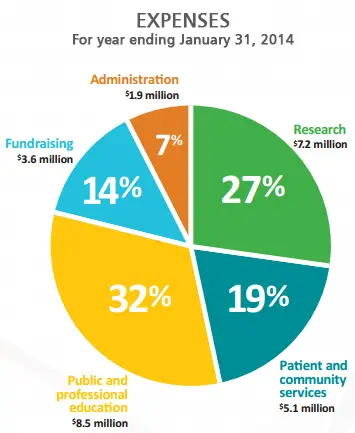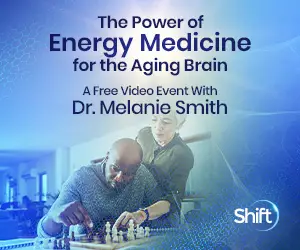 By Sayer Ji
By Sayer Ji
Contributing Writer for Wake Up World
Let’s stop pretending like pouring ice on ourselves means anything until we can acknowledge the research that known causes and cures for ALS already exist — none of them involving pharmaceutical intervention.
With $100,000,000 of your dollars raised, the ALS foundation openly admits only 27% of the funds go to ALS research, and sadly, virtually none of your donated money goes to already proven natural solutions.
Co-opting the good intentions of the mainstream with viral social media campaigns has become the flavor of the day.
The perpetual meme of ‘fighting’ idiopathic diseases — meaning, diseases ‘with no known cause’ — has become the most successful cause-marketing strategy of our time, with billions of dollars raised without appreciable yield for the ultimate outcome: saving lives. Just look at Susan G. Komen Foundation, which raises billions for races and research into pharmaceutical and/or radiation-based treatments, but has yet to do anything to stem the overdiagnosis and overtreatment of healthy women (1.3 million women falsely diagnosed of breast cancer in the past 30 years), much less improve the survival times of those who actually do have a life threatening form of breast cancer.
Emotional Cause-Marketing
You’ve probably already heard about ‘pinkwashing‘ — breast cancer awareness months‘ cause-marketing campaign that paints pink anything from breast-cancer-causing cow’s milk products, buckets of Kentucky Fried Chicken and synthetic perfume products — anything to make a quick buck by triggering a consumer’s charitable instincts.
Or, how about ‘greenwashing‘? — the intentional labeling of toxic chemicals with ‘green’ marketing copy, e.g. Simple Green cleaner, making you think you are saving yourself and the planet from the chemical apocalypse, but, in fact, ensuring you and your family are on the fast-track to arriving there.
Well, if that weren’t enough to create Orwellian cognitive dissonance in your life, now you can add ‘icewashing‘ to the mix, which uses emotional triggers and promises of doing good to generate donations to ‘find a cure’ for ALS, but whose approach may be diametrically opposed to fulfilling its stated promise promise.
Case in Point…
The ALS Association’s super-viral ‘Ice Bucket Challenge‘ meme has brought in $100 million dollars in donations, since the time of the writing of this article – and will likely surpass $100 million in the next week or so.
But where will your donated money actually go? Will it go towards identifying ALS’s true causes and cures?
Historically, the ALS Association only directs 27% of the money raised to actual research into finding cures for the condition.
Take a look at the ALS Association’s own pie chart to see where the rest of the 73% goes.
While fundraising costs, education, and patient and community services seem legitimate enough, the administrative costs are the most suspect. Any ‘non-profit’ organization that dedicates six figure salaries to its officers should raise a red flag of concern:
- Jane H. Gilbert – President and CEO – $339,475.00
- Daniel M. Reznikov – Chief Financial Officer – $201,260.00
- Steve Gibson – Chief Public Policy Officer – $182,862.00
- Kimberly Maginnis – Chief of Care Services Officer – $160,646.00
- Lance Slaughter – Chief Chapter Relations and Development Officer – $152,692.00
- Michelle Keegan – Chief Development Officer – $178,744.00
- John Applegate – Association Finance Officer – $118.726.00
- David Moses – Director of Planned Giving – $112,509.00
- Carrie Munk – Chief Communications and Marketing Officer – $142,875.00
- Patrick Wildman – Director of Public Policy – $112,358.00
- Kathi Kromer – Director of State Advocacy – $110,661.00
Even if 100% of the donations went into researching the causes of ALS and finding a much needed cure, the reality is that the already $99 million dollars the ALS Association claims it has committed to “find effective treatments and a cure” has gone mostly to pharmaceutical interventions – interventions that require multi-million dollar investments in human clinical studies (requiring close to a billion dollars be spent up front to fund these patented chemicals and biological), are almost entirely patented, explicitly for-profit medicines, and which can not provide help to those who are suffering from ALS, right here, right now.
Even more concerning is that there is a huge body of research published in peer-reviewed journals that indicates that there are over 60 natural substances that can be used right now to alleviate suffering from the condition. Our ALS research page is teeming with highly compelling studies that show natural interventions – from simple dietary intervention to cost-effective and safe nutritional supplementation – can be used right now to help those in need.
60+ Natural Cures the “Ice Washing” Campaign Isn’t Funding!
You can view the entire database on GreenMedInfo’s free-to-access natural ALS interventions page, which covers not only 60+ natural substances with proven utility, but problem substances – chemicals and drugs – and therapeutic actions – from yoga to deep breathing – that can provide patients of ALS immediate tools and strategies to take back control of their health immediately.
Let’s zoom in to some of these compelling studies so you can see how clearly the ALS foundation’s fund-raising efforts are out of sync with the already well-known natural interventions available today:
- Vitamin E: “CONCLUSION: A high intake of PUFAs [polyunsaturated fatty acids] and vitamin E is associated with a 50-60% decreased risk of developing ALS, and these nutrients appear to act synergistically.”
- Smoking Cessation: “After adjusting for age, sex, region and education, ever having smoked cigarettes was associated with an increase in risk for ALS [70% increased risk].”
- Reducing Lead Exposure: “ALS was also associated with blood and bone lead levels, with a 1.9-fold increase in risk for each mug/dl increment in blood lead and a 2.3- to 3.6-fold increase for each doubling of bone lead.”
- Vitamin B12 (methylcobalamin): “To develop a symptomatic treatment for amyotrophic lateral sclerosis, we compared the effects of ultrahigh-dose and low-dose (25 and 0.5 mg/day, intramuscularly, for 14 days) methylcobalamin on averaged compound muscle action potential amplitudes (CMAPs) in a double-blind trial. No significant changes in CMAP amplitude were found in 12 patients who had the low-dose treatment at either 2 or 4 weeks after start of treatment. By contrast, 12 patients assigned to the ultrahigh-dose group demonstrated a significant increase at 4 weeks. This method may provide a clinically useful measure to improve or retard muscle wasting, if a larger extended trial fulfills its promise.”
Another highly promising B12 study found, using 25 mg/day of methylcobalamin, found: “In the long-term effect of methylcobalamin (50 mg/day i.m., twice a week), the survival time (or the period to become respirator-bound) was significantly longer in the treated group than in the untreated.”
- Progesterone: “Increased PROG was observed in spinal onset and slow progression patients.”
- Acupuncture: “Significant neurological improvement in two patients with amyotrophic lateral sclerosis after 4 weeks of treatment with acupuncture injection point therapy using enercel.”
- Vitamin D: “Eighty-one percent of patients had a vitamin D level lower than 30 ng/mL and 43% had a vitamin D level lower than 20 ng/mL.”
- Whey protein: “Patients in the treatment group [whey protein] presented weight gain, increased body mass index (BMI), increased arm muscle area and circumference, higher albumin, white blood cell and total lymphocyte counts, and reduced creatine-kinase, aspartate aminotransferase and alanine aminotransferase.”
The Link Between Statin Drugs and ALS
We should mention that one of the most concerning signals in the biomedical literature today is on relationship between the cholesterol-lowering category of drugs known as statins and ALS. [1] [2] An ALS-like syndrome has been described in statin drug users, which has received virtually no attention within the conventional medical establishment, nor the mainstream media – it’s willing, and highly funded lapdog. It comes no surprise to us, as we have extensively documented the neurotoxicity of statins in our statin research project which has identified over 300 adverse health effects in this drug class – here are 54 studies on the topic. Also, clearly, the brain is composed largely of cholesterol.
Suppressing it’s production, therefore, interferes with the most basic building-blocked required for neurological health: this is a no-brainer (pun intended).
Here is the kicker: The ALS associations’ corporate sponsors include the following cholesterol-lowering drug manufacturers:
“Neurodegenerative Diseases” Endemic to Post-Industrial Era
It is time to come to terms with ALS, Huntington’s, Alzheimer’s, Parkinson’s, and all the other so-called “neurodegenerative diseases”. Instead of enshrining symptoms into reified disease-categories as monolithic, idiopathic, entities fleshed out in esoteric Greek or Latin terminology, which further concretizes the false notion that we are powerless against these ‘conditions’, let’s acknowledge that they all form part of the spectrum of brain damage associated conditions that are endemic to the post-modern, post-industrial era.
Do we want to cure these conditions? If so, let’s start by acknowledging that damage to the human brain is now a universal experience – rather, it is only a matter of what degree you are experiencing it. Avoiding chemical and radiation exposures, avoiding nutritional deficiencies and/or incompatibilities – this is how take back control of our brain health.
Please consider that the best way to help ALS patients is to spread awareness of the already known man-made causes and natural solutions for this condition. At GreenMedInfo, we are making available our free ALS research guide for immediate download so that folks can easily obtain solutions today:
Download GreenMedInfo’s FREE ALS research PDF NOW!
VIDEO: the ALS Bucket Challenge, Challenged!
After accepting Dr. Joseph Mercola’s 24-hour challenge, Sayer explains why the ALS Association’s fund-raiser is a typical cause-marketing charade, with already identified causes of ALS – and natural solutions – unrecognized and unfunded by the organization who raised $80+ million dollars in the past month only.
Sayer points out the link between statins and ALS and reveals ALS Association corporate sponsors include drug companies that manufacture them, not unlike the pharmaceutical industry’s creation of Breast Cancer Awareness Month and all the nauseating pinkwashing that ensued. The head ALS Association executive makes over $330,000 a year — calling into question whether it is a charity or a business organization.
Sayer gets a triple shot of ice water — thanks to his two more than willing little helpers and a mystery bucket splasher — and challenges Carla Sanchez of Organic Lifestyles TV, and Dr. William Davis, author of WheatBelly, to respond to his challenge.
Also, read Health Impact News’ piece:
ALS Ice Bucket Challenge: Do You Know What You Are Supporting?
References:
[1] Beatrice A Golomb, Edwin K Kwon, Sabrina Koperski, Marcella A Evans. Amyotrophic lateral sclerosis-like conditions in possible association with cholesterol-lowering drugs: an analysis of patient reports to the University of California, San Diego (UCSD) Statin Effects Study. Drug Saf. 2009;32(8):649-61. PMID: 19591530
[2] I Ralph Edwards, Kristina Star, Anne Kiuru. Statins, neuromuscular degenerative disease and an amyotrophic lateral sclerosis-like syndrome: an analysis of individual case safety reports from vigibase. Drug Saf. 2007;30(6):515-25. PMID: 17536877
Further articles by Sayer Ji:
- How Monsanto’s ‘RoundUp’ is Cursing the Global Food Supply
- Is Miami on the Brink of a Nuclear Disaster?
- Garlic Cures 100% of Warts In Clinical Study
- 7 Simple Ways to Unclog Your Arteries Naturally
- Why Monsanto’s ‘Cure’ For World Hunger Is Cursing The Global Food Supply
- 13 Alternatives to Viagra That Won’t Fall Flat
- Research Proving Vitamin C’s Therapeutic Value in 200+ Diseases
- Sesame Seeds – Ten Amazing Health Benefits Of This Super-Seed
- Biophotons: The Human Body Emits, Communicates with, and is Made from Light
- 3 Evidence-Based Ways To Reverse Skin Aging Naturally
- How to Clean Your Arteries With One Simple Fruit
- 13 Evidence-Based Medicinal Properties of Coconut Oil
- The Spice That Prevents Fluoride From Destroying Your Brain
- Turmeric Beats Ibuprofen for Arthritis of the Knee
- Probiotics Destroy Toxic Chemicals In Our Gut For Us
- Measles Outbreak: a Failing Vaccine, Not a Failure To Vaccinate
About the author:
Sayer Ji is an author, educator, Steering Committee Member of the Global GMO Free Coalition (GGFC), advisory board member of the National Health Federation, and the founder of GreenMedInfo.com – an open access, evidence-based resource supporting natural and integrative modalities. His writings have been published and referenced widely in print and online, including Truthout, Mercola.com, The Journal of Gluten Sensitivity, New York Times and The Well Being Journal.
In 1995 Sayer received a BA degree in Philosophy from Rutgers University, where he studied under the American philosopher Dr. Bruce W. Wilshire, with a focus on the philosophy of science. In 1996, following residency at the Zen Mountain Monastery in upstate New York, he embarked on a 5 year journey of service as a counsellor-teacher and wilderness therapy specialist for various organizations that serve underprivileged and/or adjudicated populations. Since 2003, Sayer has served as a patient advocate and an educator and consultant for the natural health and wellness field.
Visit GreenMedInfo online and on Facebook, or sign up for GreenMedInfo’s Newsletter.

If you've ever found value in our articles, we'd greatly appreciate your support by purchasing Mindful Meditation Techniques for Kids - A Practical Guide for Adults to Empower Kids with the Gift of Inner Peace and Resilience for Life.
In the spirit of mindfulness, we encourage you to choose the paperback version. Delve into its pages away from screen glare and notifications, allowing yourself to fully immerse in the transformative practices within. The physical book enriches the learning process and serves as a tangible commitment to mindfulness, easily shared among family and friends.
Over the past few years, Wake Up World has faced significant online censorship, impacting our financial ability to stay online. Instead of soliciting donations, we're exploring win-win solutions with our readers to remain financially viable. Moving into book publishing, we hope to secure ongoing funds to continue our mission. With over 8,500 articles published in the past 13 years, we are committed to keeping our content free and accessible to everyone, without resorting to a paywall.









